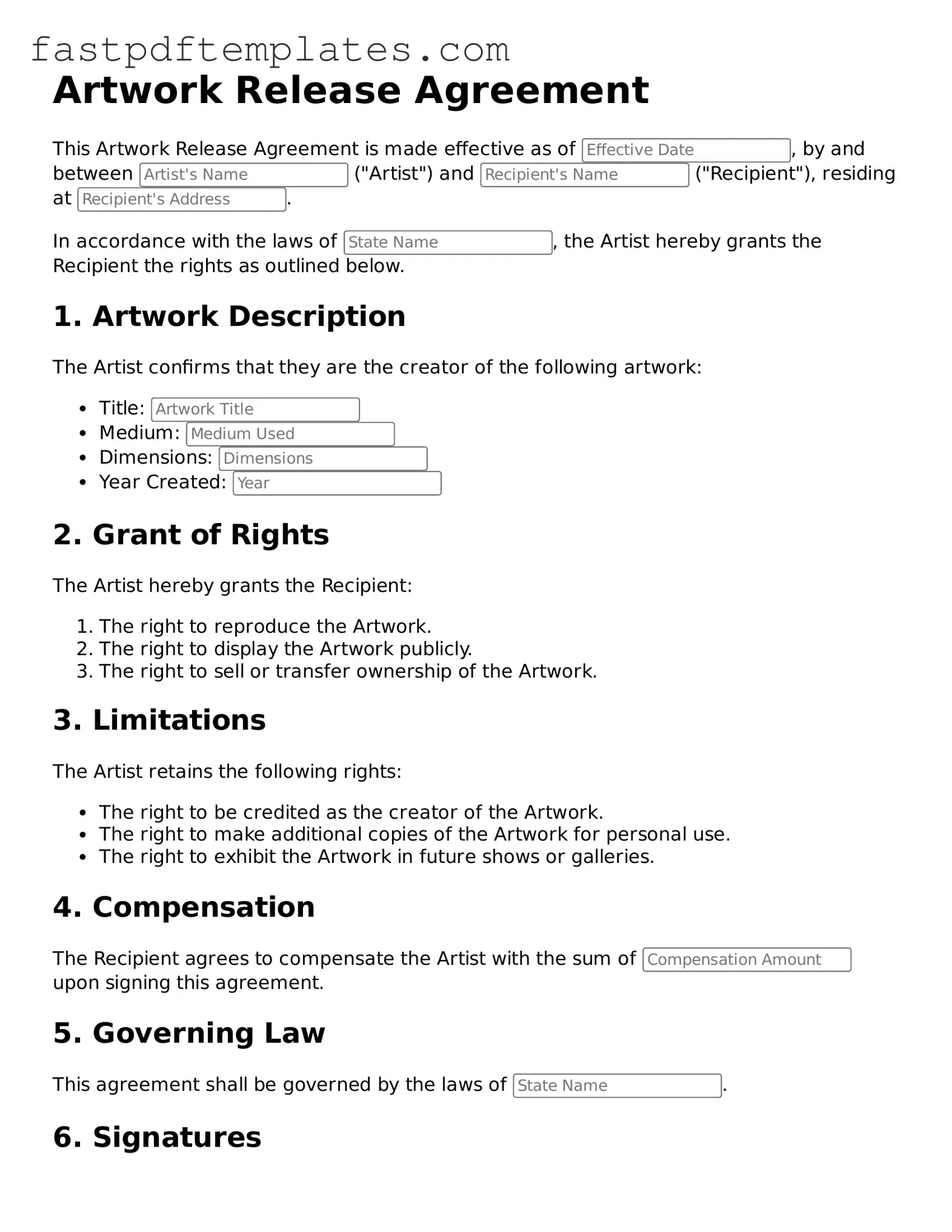Fillable Artwork Release Document
The Artwork Release form is a legal document that grants permission for the use of an artist's work by another party. This form ensures that the artist retains certain rights while allowing others to reproduce or display their artwork. Understanding its importance can help both artists and users navigate the complexities of copyright and usage rights effectively.
Access Document
